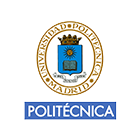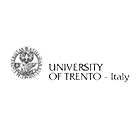Click here to see Venice Promotional Video!

With its Byzantine domes and 8500 sq metres of luminous mosaics, Venice's basilica is an unforgettable sight. It dates to the 9th century when, according to legend, two merchants smuggled the corpse of St Mark out of Egypt in a barrel of pork fat. When the original burnt down in 932 Venice rebuilt the basilica in its own cosmopolitan image, with Byzantine domes, a Greek cross layout and walls clad in marbles from Syria, Egypt and Palestine.
This grand Gothic palace was the Doge's official residence from the 9th century, and seat of the Venetian Republic's government (and prisons) for nearly seven centuries. The Doge's Apartments are on the 1st floor, but it's the lavishly decorated 2nd-floor chambers that are the real highlight. These culminate in the echoing Sala del Maggior Consiglio (Grand Council Hall), home to the Doge’s throne and a 22m-by-7m Paradise painting by Tintoretto’s son Domenico.
Everyone wanted the commission to paint this building dedicated to the patron saint of the plague-stricken, so Tintoretto cheated: instead of producing sketches like rival Veronese, he gifted a splendid ceiling panel of patron St Roch, knowing it couldn't be refused or matched by other artists. The artist documents Mary's life story in the assembly hall, and both Old and New Testament scenes in the Sala Grande Superiore upstairs.
Venice's bustling Rialto Market has been whetting appetites for seven centuries. Scour the stalls of the Pescaria for glistening mountains of moscardini (baby octopus), moeche (soft-shell crabs), and inky seppie (squid).
Venice's historic gallery traces the development of Venetian art from the 14th to 18th centuries, with works by Bellini, Titian, Tintoretto, Veronese and Canaletto among others. The former Santa Maria della Carità convent complex housing the collection maintained its serene composure for centuries until Napoleon installed his haul of Venetian art trophies here in 1807. Since then there’s been non-stop visual drama inside its walls.
Once its dominion over the high seas ended, Venice discovered the power of high Cs, hiring as San Marco choirmaster Claudio Monteverdi and opening La Fenice ('The Phoenix') in 1792. Rossini and Bellini staged operas here, Verdi premiered Rigoletto and La Traviata , and international greats Stravinsky, Prokofiev and Britten composed for the house, making La Fenice the envy of Europe. From January to July and September to October, opera season is in full swing. Tours are also possible with advance booking.
Founded in 1104, the Arsenale soon became the greatest medieval shipyard in Europe, home to 300 shipping companies employing up to 16,000 people.
A soaring Italian-brick Gothic church, I Frari's assets include marquetry choir stalls, Canova's pyramid mausoleum, Bellini's achingly sweet Madonna with Child triptych in the sacristy and Longhena's creepy Doge Pesaro funereal monument. Upstaging them all, however, is the small altarpiece.
Chiesa della Madonna dell’Orto
This elegantly spare 1365 brick Gothic cathedral dedicated to the patron saint of travellers remains one of Venice's best kept secrets. It was the parish church of Venetian Renaissance painter Tintoretto.
Basilica di Santa Maria della Salute
Guarding the entrance to the Grand Canal, this 17th-century domed church was commissioned by Venice’s plague survivors as thanks for salvation. Baldassare Longhena's uplifting design is an engineering feat that defies simple logic; in fact the church is said to have mystical curative properties. Titian eluded the plague until age 94, leaving 12 key paintings in the basilica's art-slung sacristy.





































